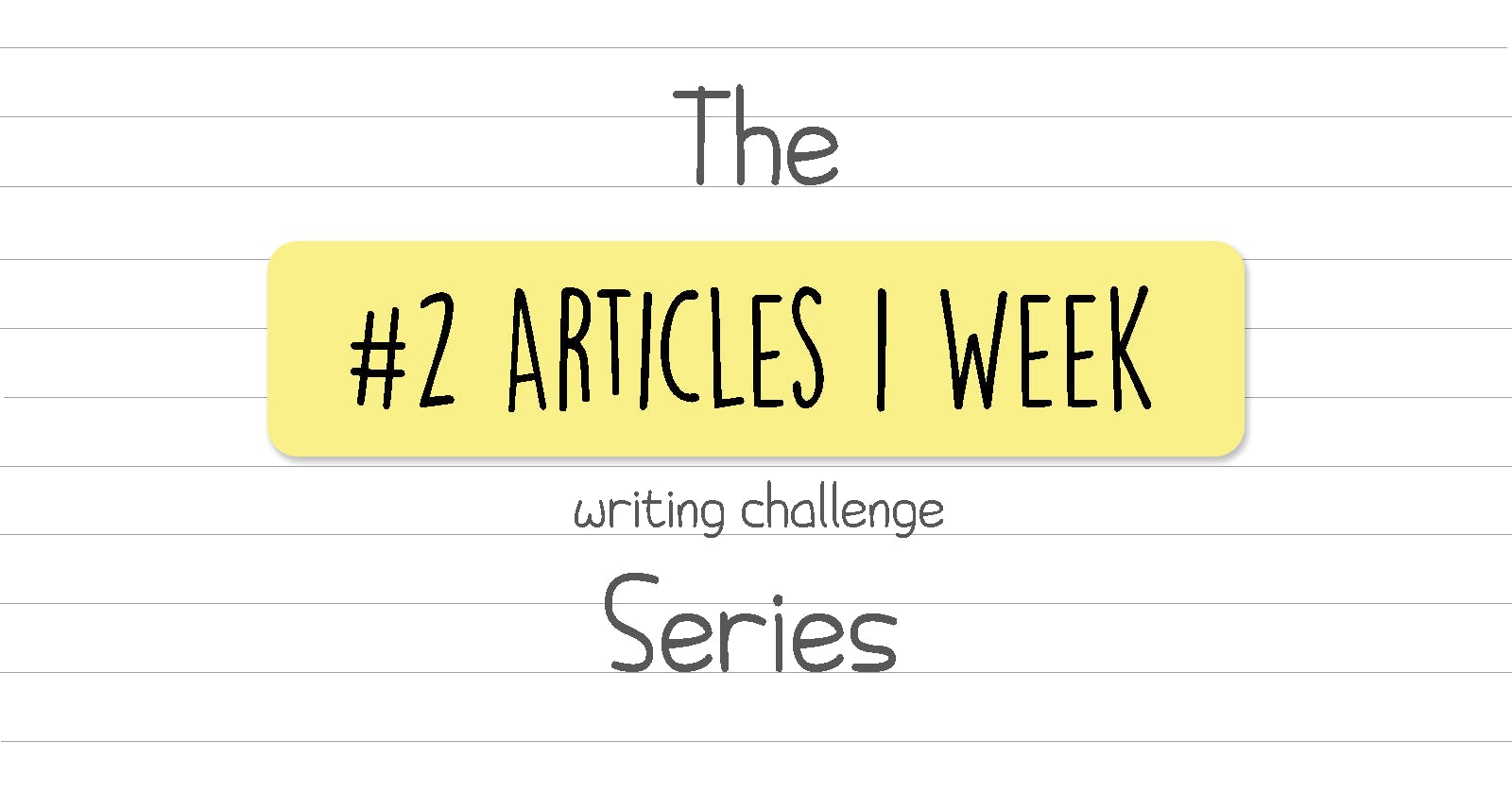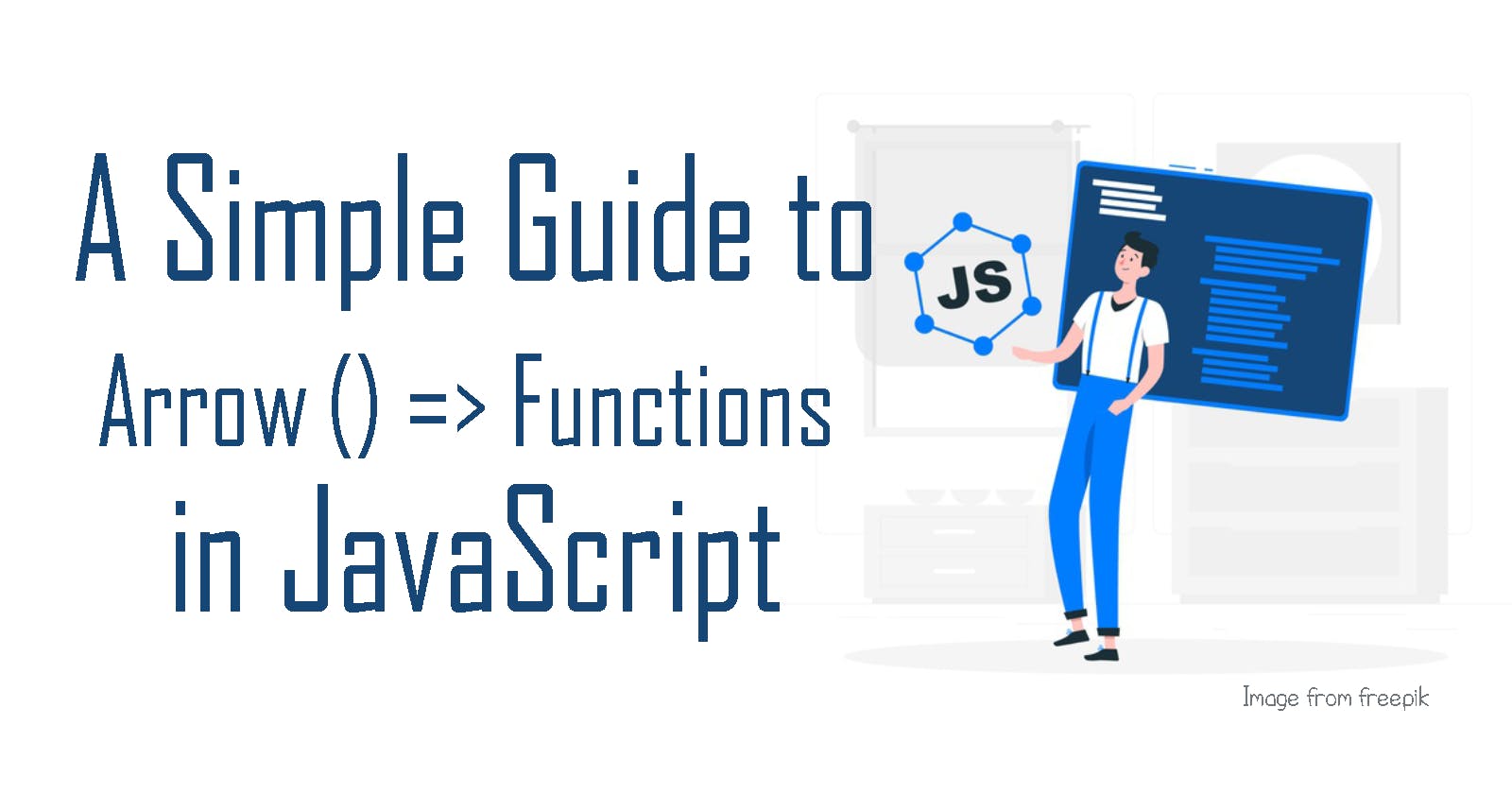Hello everyone! So here we are. The final article I'm writing for the #2Articles1Week Challenge Series on Hashnode. It doesn't feel like it has been a month since I first started the challenge. Time flies really fast when you are busy haha!

Today is the last article for this challenge. We are tackling a highly familiar concept in JavaScript: Arrow Functions. I hope today's article will be useful for JavaScript beginners who are still learning about functions and arrow syntax. Without further ado, let's begin!
What is an Arrow Function?
If you are learning JavaScript, it is inevitable that you will hear about "arrows". This little syntax has been around since ES6 is introduced, and it revolutionizes the way we write JavaScript functions.
So, an arrow function basically uses the arrow syntax to accept arguments like a normal function and run in their enclosing scope context.
Syntax
Here's the basic arrow functions syntax:
//1. Function that returns a single expression
(param1, param2, ...) => return_expression
//2. Function that contains some lines of code
(param1, param2, ...) => {
statements
return some_expression
}
//3. Function with only one parameter
param => return_expression
param => {statements}
//4. Function with no parameter
() => return_expression
() => {statements}
Example
Let's say you have a function expression such as:
const add = function (a, b){
return a+b;
}
The same function can be written as an arrow function like:
const add = (a,b) => a + b
As observed in the example, arrow functions are good for 2 things:
- Concise and more readable code: no need to write 'function' in front and code looks more concise.
- Implicit return: no need to write 'return' for single return statements.
When to use them
Besides understanding how to write them, it is also important to know when to use them. An arrow syntax is useful to apply in the following types of functions:
1. Functions that iterate over and over again
Arrow functions can be very useful for functions that iterate over the items of some type of list such as an array or a string.
Common JavaScript methods such as map(), filter() and reduce() can look much cleaner with the help of arrow functions.
For example, we have a function that uses map() to add 1 to each element in the array. Here's what it looks like in a non-arrow function.
let numbers = [1, 2, 3, 4];
numbers.map(function(num) {
return num+1;
});
//output array: [2,3,4,5]
With the arrow function, it will be faster to write.
let numbers = [1, 2, 3, 4];
numbers.map(num => num+1); //output array: [2,3,4,5]
Now isn't that much simpler to write and easier to read?
2. Promise chains
It is easy for Promises to look very repetitive and lengthy when using non-arrow syntax. Take a look at this example:
this.fetchSomething()
.then(function(res){
return res.json();
})
.then(function(json){
return json.data;
})
.then(function(data){
return data.map(function(items) {
items.name;
})
})
This looks very repetitive and tedious to write with having to always write 'function' and 'return' in almost every single line. We can simplify this by using arrow functions instead:
this.fetchSomething()
.then(res => res.json())
.then(json => json.data)
.then(data => data.map(items => items.name));
Look at that! The arrow functions do what its best at - keeping conciseness by reducing redundant words and implicit returning.
3. Callback Functions
This is probably what most beginners will use arrow functions for. Callback functions are very common in JavaScript and reducing them with the arrow syntax can drastically save a developer time and effort.
If you are unsure what callback functions are, read Conquering JavaScript Callback Functions.
Let's illustrate this with a simple example:
function myName(name, callback){
console.log(`Hi, I am ${name}!`);
callback();
}
//Call the function
myName("Victoria", function() {
console.log("I am a web developer!");
})
/*
Output:
Hi, I am Victoria!
I am a web developer!
*/
Replacing the callback with the arrow syntax, we get:
function myName(name, callback){
console.log(`Hi, I am ${name}!`);
callback();
}
myName("Victoria", () => console.log("I am a web developer!"));
/*
Output:
Hi, I am Victoria!
I am a web developer!
*/
And there you go! These 3 types of functions are where arrow functions can be fully used and benefit from. Now let's look at where we cannot use them.
When NOT to use
So far we've discussed how great and useful the arrow syntax is. But now it's time to look at its limitations and in which context it will be a bad idea to use.
1. Constructors
Arrow functions do not create their own scope when executed. They are bound to their enclosing scope context, which means unlike regular functions, arrow functions do not have their own this.
Below is an example of a typical constructor using an arrow function. It throws an error when it is invoked with the 'new' keyword.
const Person = (name) => {
this.name= name;
console.log(this);
};
const roger = new Person('Roger');
//Output: TypeError Person is not a constructor
On the other hand, using a regular function will work properly.
const Someone = function(name){
this.name= name;
console.log(this);
}
const james = new Someone('James');
//Output: Someone {name: 'James'}
2. Object Methods
When we create an object method in JavaScript with a regular function, it creates its own scope so that this refers to the object that has the method stored as its property. However, arrow functions do not have their own scope so this would refer to the window object. This results in this being a window object and any of its property being undefined.
Let's demonstrate it with code:
var obj = {
i: 10,
b: () => console.log(this.i, this), // does not create a new scope
c: function() {
console.log(this.i, this);
}
}
obj.b(); // prints undefined, Window {...} (or the global object)
obj.c(); // prints 10, Object {...}
Code from: developer.mozilla.org/en-US/docs/Web/JavaSc..
As seen from the code above, method b which is created using the arrow function outputs an undefined value and a window object; whereas method c, constructed with a regular function outputs correctly.
3. Callback Functions with 'this'
The fact that arrow functions do not have their own scope and this also makes them unsuitable for callback functions which includes 'this'. Consider the following code:
const myButton = document.getElementById('example');
myButton.addEventListener('click', () => {
console.log(this); //refers to window not the button itself
this.innerHTML = 'Clicked'; //so this won't work
});
The callback function intends to use this to refer to the button and set its innerHTML to 'Clicked'. However, this will not work because the arrow function will make this refer to the window object instead.
Conclusion
Arrow functions are a necessity in JavaScript programming. They provide a revolutionary way to reduce code repetition and improve readability in substitute of regular functions. They do, nevertheless, come with limitations which mainly stem from scope.
Just like learning any new concept, it is important to understand when it is best and when it is not best to use this type of function. I hope this article has given a few helpful insights. Please leave a like or share if it is helpful in any way. Thanks for reading and I encourage you to check out the 'Further Reading' section below for a more in-depth info on arrow functions.
Further Reading
- More on scopes: blog.greenroots.info/javascript-scope-funda..
- developer.mozilla.org/en-US/docs/Web/JavaSc..
- javascript.info/arrow-functions-basics
- javascripttutorial.net/es6/javascript-arrow..
Final Thoughts: 2Articles1Week Challenge
Warning: Quite a lengthy read. Optional to read.
What I Learnt from the Challenge
Before starting this challenge, I was quite hesitant to start. Mainly because I was unsure whether I can commit to writing so much. Of course, I had been pretty consistent in my writing before this challenge but unexpected things could always happen. At that time, I cannot guarantee that I can write so often in July, so taking on this challenge would mean commitment and a promise to myself that I won't stop writing for a month.
During this challenge, maintaining the habit to write was not easy. Even though I usually have queued 3-4 articles in my drafts as explained in My Ordinary Writing Process article, it took a lot of self-discipline to keep filling words in my drafts whenever I am free. Still, this is relatively easy compared to thinking about what to write.
As a writer, it is inevitable to hit a phase when you are running out of ideas. I like to prioritize quality over quantity so I want each article to be about something I wanted to write and proud to write about. When I was thinking about the topics to write about, I thought it will be somehow more fun to have 1 non-technical and 1 technical article per week. But it turned out to be tougher than I thought, especially in deciding what non-technical topics to write about. I think doing this challenge really pushes me outside my comfort zone (in a good way).
For example, if it weren't for the challenge, I would have not written and published articles like Why Every Developer Should Start Blogging or The Art of Productive Procrastination or my aforementioned writing process. Because these topics are a little personal to me (and I'm quite shy irl), I felt a little embarrassed/hesitant to publish. But after publishing them and receiving very kind words from this community, I realized that this platform is a safe place to share personal stories/opinions; and that it's not just a platform for the technical web development articles I had been writing about. I felt very fortunate to have found this community and platform.
All in all, this challenge is definitely a worthwhile experience for me. I had a lot of fun writing about topics I am passionate about and reading everyone's articles from this challenge. It made me feel a little closer to the fellow developers here. I have also improved my self-discipline and time management skills from this challenge. And maybe a little creativity haha.
Biggest Takeaway and Closing Comments
The biggest takeaway for me is being inspired by the great writers on Hashnode. Shoutout to Tapas Adhikary, Edidiong Asikpo, Rana Emad, vxhLOGS, Anita Charles, Ruth Ikegah, Tantoluwa Heritage Alabi NB and many more great writers who have given me a lot of insights and inspiration throughout the challenge. Reading their articles has become something I look forward to every week. If you are reading this, thank you so much! You are all amazing!
Last but not least, for anyone who is doing the challenge too, I congratulate you for participating, no matter where your progress is currently at. I hope you'll finish your #2Articles1Week challenge on a good note too. And for those who have been following my #2Articles1Week Series, thank you so much! I hope my articles were somewhat helpful or engaging for you. I'll continue to write as consistently as I do now so please stay tuned to future articles. Cheers!

